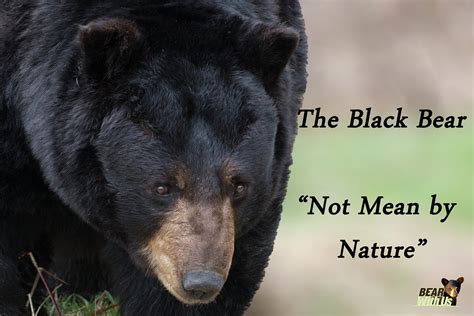Introduction

The American Bear Association (ABA) is a leading non-profit organization dedicated to the conservation and management of bears in North America. Established in 1991, the ABA has played a vital role in promoting the understanding and appreciation of bears while advocating for their protection and responsible management.
Mission and Objectives
The ABA’s mission is “to promote and facilitate the conservation and management of bears through research, education, and public policy.” To achieve this mission, the organization focuses on the following objectives:
- Conservation: Protecting and enhancing bear populations and habitats.
- Education: Providing accurate and scientifically based information about bears to the public.
- Advocacy: Advocating for policies that prioritize the conservation and management of bears.
Membership and Supporters
The ABA’s membership includes scientists, wildlife professionals, conservationists, bear enthusiasts, and the general public. The organization also receives support from various government agencies, corporations, and foundations.
Research and Conservation Initiatives
The ABA actively supports and conducts research on bear ecology, behavior, and management. Some key initiatives include:
- Bear population monitoring: Collaborating with state and federal wildlife agencies to monitor bear populations and assess their status.
- Habitat conservation: Identifying and protecting critical bear habitats through partnerships with landowners and other conservation organizations.
- Conflict mitigation: Developing and implementing strategies to minimize conflicts between bears and humans in urban and rural areas.
Education and Outreach
The ABA plays a significant role in educating the public about bears. The organization’s educational programs include:
- BearWise USA: A national program that promotes responsible bear-human interactions, providing guidance on bear safety, food storage, and waste management.
- BearWatchers International: A volunteer-based program that trains and coordinates volunteers to monitor bear populations and collect data on their behavior.
- Publications: Producing educational materials, including books, articles, and online resources, to increase knowledge and understanding of bears.
Advocacy and Policy
The ABA actively advocates for policies that prioritize the conservation and management of bears. The organization engages with government agencies, lawmakers, and decision-makers to promote sound wildlife management practices and protect bear populations.
Table 1: Bear Populations in North America
| Bear Species | Population Estimate |
|---|---|
| Black Bear | 750,000 – 950,000 |
| Brown Bear | 30,000 – 45,000 |
| Polar Bear | 22,000 – 31,000 |
| Kermode Bear (subspecies of Black Bear) | 600 – 1,200 |
Addressing Pain Points and Motivations
Pain Points:
- Habitat loss and fragmentation.
- Human-bear conflicts.
- Lack of public understanding about bears.
Motivations:
- Fear of bear attacks.
- Desire to protect property and livestock.
- Appreciation for the ecological importance of bears.
Effective Mitigation Strategies
- Education and Outreach: Raising awareness about bear safety and responsible bear-human interactions.
- Bear-proofing: Implementing measures such as securing attractants (e.g., food, garbage) to prevent bears from accessing them.
- Habitat Protection: Conserving and managing critical bear habitats to ensure their long-term viability.
- Conflict Resolution: Training wildlife professionals to safely and effectively resolve human-bear conflicts.
Table 2: Common Bear-Human Conflict Situations
| Situation | Percentage of Occurrences |
|---|---|
| Property Damage | 55% |
| Livestock Depredation | 25% |
| Bear Encounters | 15% |
| Human Injuries | 5% |
Table 3: Bear Conservation Priorities
| Priority | Goal |
|---|---|
| Population Monitoring | Assess the status and trends of bear populations. |
| Habitat Conservation | Protect and enhance critical bear habitats. |
| Conflict Mitigation | Minimize conflicts between bears and humans. |
| Public Education | Increase knowledge and understanding of bears among the public. |
| Research | Conduct scientific research on bear biology, ecology, and management. |
Table 4: Federal Regulations for Bear Protection
- Endangered Species Act: Protects threatened and endangered bear species, such as the grizzly bear.
- Migratory Bird Treaty Act: Protects bears that travel across international borders.
- National Forest Management Act: Regulates logging and other activities that could impact bear habitats on public lands.
- Wilderness Act: Protects designated wilderness areas that provide habitat for bears.
Conclusion
The American Bear Association plays a vital role in advocating for the conservation and management of bears in North America. Through research, education, and advocacy, the organization works to ensure the long-term survival of bear populations while fostering a responsible coexistence between bears and humans. By addressing the pain points and motivations of stakeholders, the ABA develops effective strategies to mitigate human-bear conflicts, protect bear habitats, and increase public understanding of these magnificent animals.
